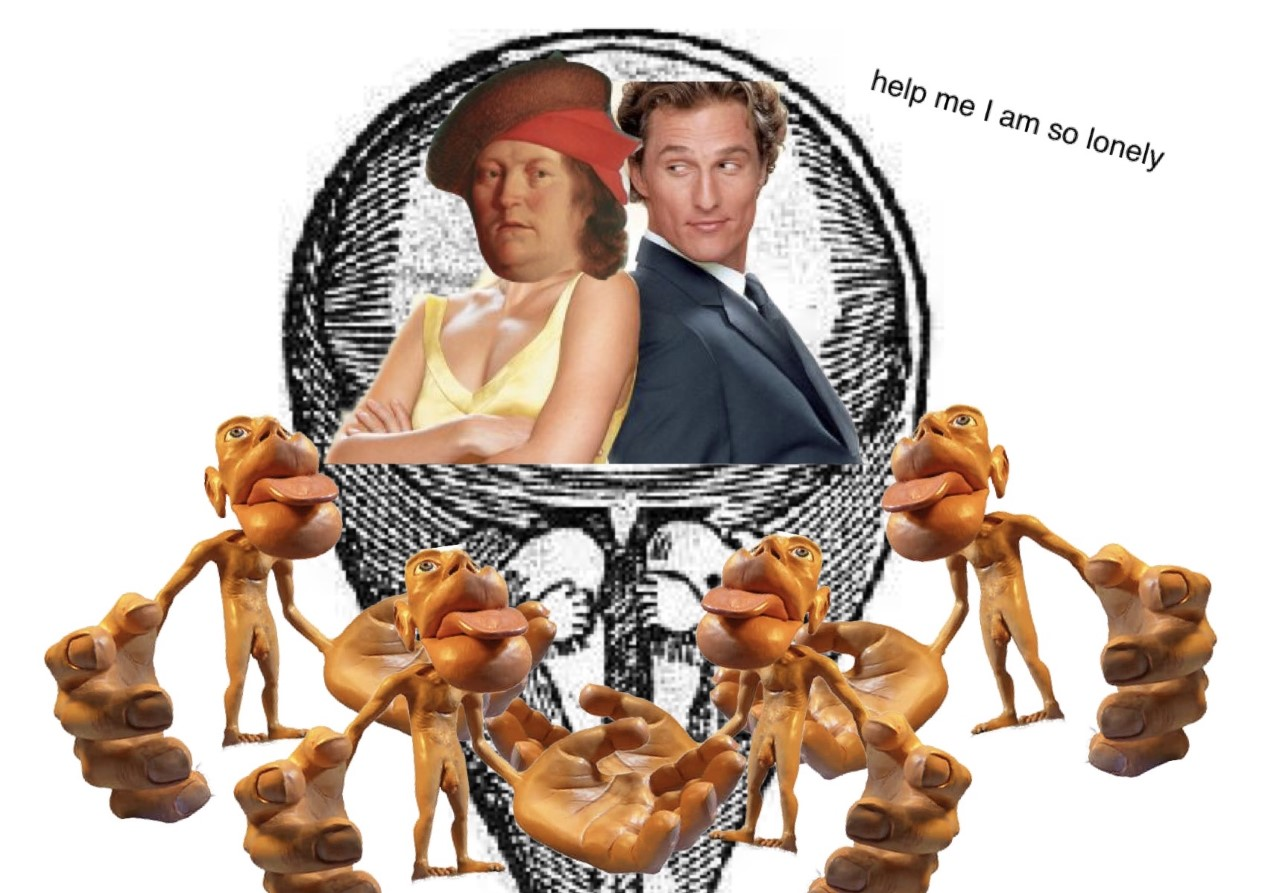Image Description: Four cortical homunculus’ surrounding a sperm. Inside the sperm is Matthew McConaughey from How To Lose a Guy in 10 Days back to back with Paracelsus. Text reads “help me I’m so lonely”.
By Deni Campbell
The 1500s saw the end of a millennia of turmoil in Europe, and from the ashes rose a collection of unqualified but hopeful men desperate to regain a sense of societal sophistication. One of these men, Paracelsus, steamrolled his way the into pseudo-science history books with some blonde ambition and a little bit of semen – not the hero we needed, but the hero we probably deserved.
Paracelus is now hailed as the father of toxicology – the study of poisons – and many of his theories were critical to modern medical treatments for sepsis, syphilis, and poisoning. However, he was excluded from many universities during his time, and much like Vincent Van Gogh and Princess Diana, his work was largely celebrated posthumously. This blatant disregard for scientific talent may seem unjust, but what if I told you that Paracelsus also spent much of his career incubating a mixture of rotten meat and his own semen in an attempt to create a miniature version of himself (a ‘homunculus’)? Yeah, now you get it.
Before we go any further, I would like to point out that I am not referring to the modern sensory/cortical homunculus that may or may not have emerged from the mind of Robert Rodriguez, creator of the Spy Kids series. I’m referring to the first documented attempt at a test tube baby – the beginning of a long history of Prometheus-esque behaviour in the scientific community.
Paracelsus’ homunculus recipe was a ballsy endeavour into alchemy, in which he gave instructions on how to create a tiny human without fertilisation or gestation in a womb. It’s also unclear whether Paracelsus was excluded from the scientific community before or after he decided to pull this crap. Paracelsus never married, and according to one of his students, he avoided the company of women altogether. I personally like to think he became so lonely after exile that he tried to create a man from his own little men to keep him company. Sperm + rotten meat + a profound overestimation of the fixed market value of men = a new best friend? Having been in quarantine for a month now, I can empathise.
In Paracelsus’ De Natura Rerum, he outlines the forty-day recipe to create a living being with only a few pantry staples:
“Let the Sperm of a man by itself be putrified in a gourd glasse, sealed up, with the highest degree of putrefaction in Horse dung, for the space of forty days, or so long untill it begin to bee alive, move, and stir, which may easily be seen. After this time it will be something like a Man, yet transparent, and without a body. Now after this, if it bee every day warily, and prudently nourished and fed with the Arcanum of Mans blood, and bee for the space of forty weeks kept in a constant, equall heat of Horsedung, it will become a true, and living infant, having all the members of an infant, which is born of a woman, but it will be far lesse. This wee call Homunculus, or Artificiall [Man?].” Paracelsus (via Sandrovigius), De Natura Rerum (Of the Nature of Things)
This obviously didn’t work, but I’m a sucker for a participation ribbon and in his defence, he tried really hard. What’s really interesting about this theory, aside from the obvious, is the influence it had on embryology for the centuries that followed.
Preformationism was a popular theory of reproduction in the seventeenth and eighteenth centuries, which claimed that organisms developed from tiny versions of themselves (either from a sperm or an ovum). The spermist branch of preformationism commonly referred back to Paracelsus’ emphasis on sperm holding the key to life, to support their theory that each sperm held within it a small, yet fully-formed person with the ability to grow inside any suitable incubator.
Run-of-the-mill spermism, however, did not take to his other beliefs, including his strong opposition to both masturbation and abstinence. He theorised that if semen couldn’t reach the womb, it would either evolve into a monster as a result of masturbation, or decay and cause lumps in the testes as a result of abstinence. In Paracelsus’ inspired yet troubled eyes, castration was the only option for those unable to inseminate a woman. Just when you thought Pazza had found a sense of belonging in even the darkest corners of Renaissance medicine, here he comes, scalpel in hand, ready to neuter any incel he can find.
Deni has had enough of overestimating the fixed market value of men and is moving on to crickets.
Image courtesy of Deni Campbell (but I guess that was obvious?)


An interesting and amusing piece.
What is meant by the fixed market value of men?